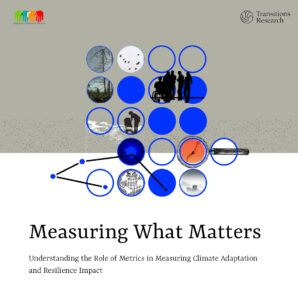This year’s theme for the World Environment Day is Ecosystem Restoration and the United Nations General Assembly has declared 2021-2030 as the UN Decade on Ecosystem Restoration.
Several campaigns and restoration projects have called for resorting ecosystems and biodiversity hotspots where large-scale restorations plans are underway through programmes like the National Afforestation Programme and the National Biodiversity Strategy and Action Plan (NBSAP). However, systematic approaches towards addressing ecosystem restoration in cities have received little attention in India.
Indian cities today are suffering from unsustainable urbanisation, climate change, biodiversity loss and the degradation of ecosystem services, coupled with problems of water scarcity, flooding and pollution. However, policymakers in India are yet to actively look at integrating nature into urban infrastructure. On the other hand, policymakers in Europe are increasingly looking towards nature-based solutions (NbS).
Nevertheless, in India, there has been an increase in policies aimed at addressing blue and green infrastructure, such as the Atal Mission for Rejuvenation and Urban Transformation (AMRUT). In this context, it is important to underscore where such interventions are necessary from a policy perspective.
AMRUT is being implemented for urban transformation projects to bring about infrastructural reforms, particularly in green and blue infrastructure. NbS could be integrated within such broad missions to bring about changes in policies.
Across the world, various urban problems are being dealt with using solutions that have nature at the centre of their strategies. For instance, Colombia’s second-largest city, Medellín, transformed 18 roads and 12 waterways using NbS under the Green Corridor project. Such solutions will be increasingly needed in the Indian scenario, with targets to be incorporated into policy making and city planning agendas.
A recent study by researchers from IIT-Kharagpur looked at the urban and surrounding rural land surface temperatures in 44 major cities from 2001 to 2017. The study found that mean daytime temperatures of surface urban heat islands (UHI Intensity) were going up by around 2 degrees Celsius for most cities as compared to the surrounding areas. This shows that urban areas need to actively incorporate Nbs as part of their solutions.
Extreme weather events are gripping India cities, with flash floods increasingly becoming the norm in growing cities, even among tier-2 ones. Some stakeholders are now turning to NbS for respite, like the city of Gorakhpur in Uttar Pradesh. Local environmental groups and impacted groups here implemented a series of nature-based solutions to bring about effective flood management in the city.
Green space experiments in cities have increased and the politics of such spaces comes into play while trying to interpret what the green space is for, land-use changes, how to retain urban nature while also accommodating increasing population density. These issues make the task of implementing NbS challenging in the absence of a policy framework.
Coastal cities present an even more pressing need for NbS implementation because of the growing impacts of climate change, such as rising sea levels and coastal flooding. Mumbai, for instance, witnessed floods in 2005 which killed over 1,400 people. Among the causes for the destruction that were cited was the clearing of 40 percent of the city mangroves for coastal development.
Goa’s capital Panaji, too, is no stranger to such problems. Panaji is an intricate network of waterways, low lying areas, and traditionally reclaimed agricultural lands. Multiple ecologically vulnerable areas present an opportunity for the implementation of nature-based solutions. A major problem in the city is seawater ingress in inland aquifers along the tidal river courses, which, coupled with groundwater exploitation, is increasing water scarcity. The salt water intrusion has also affected the quality of groundwater in the city, along the Mandovi River and Zuari River in parts of the Tiswadi taluk.
The ecologically rich mangrove ecosystems along the rivers Mandovi and Zuari, and along the creeks St. Inez and Ourem Creek face the risk of being destroyed for reclamation for commercial and residential buildings. The reduction of the mangrove cover is leading to increased soil erosion, habitat destruction, and increasing the risk of storm surges. The erosion of the Khazan lands, which are ‘community managed, integrated agro-fishery ecosystems’, can lead to flooding.
The increasing construction on the reclaimed marshlands and agricultural lands is increasing the threat of water logging. The waterlogging problem along the reclaimed land is exacerbated due to the increase in pollution of the Mandovi River due to waste dumping in the St. Inez Creek. The creek, however, is a victim to myriad other problems like sedimentation, eutrophication, weed growth, collapsed embankments and release of sewage.
Some Indian coastal cities are already engaging in steps to integrate biodiversity and ecosystem services into spatial planning, land use management, local economic development and infrastructure design. For instance, Panaji and Mangaluru have been part of the INTERACT-Bio, a four-year project – which aims to provide expanding urban communities in the Global South with tools for managing nature-based solutions so that they can enjoy the associated long-term benefits.
Despite such efforts nature-based solutions have not yet established themselves in policymaking. To promote NbS in urban planning, we need to actively ask questions on how local government policies can contribute to retaining and expanding urban green spaces to support transitions towards nature-based cities. However, rather than merely retrofitting NbS into policymaking, policies need to ensure that mechanisms exist to ensure ecosystem services. Mechanisms that address the identification of landscapes for implementing NbS, integrating NbS into local environments, and the delivery of NbS need to be ensured through policymaking.
The UN Decade on Ecosystem Restoration is an effort to encourage countries to ‘reimagine, recreate and restore’ our relationship with nature. For India to get a head start in this journey and be an active part of the UN’s restoration effort, meticulous attention to nature in cities should be a concern for all urban planners and policymakers.
The publication was first published by the authors under auspices of erstwhile Tandem Research. This piece was originally published in Firstpost.




